JMicron JMF667H Reference Design (128GB & 256GB) Review
by Kristian Vättö on May 29, 2014 9:00 AM ESTRandom Read/Write Speed
The four corners of SSD performance are as follows: random read, random write, sequential read and sequential write speed. Random accesses are generally small in size, while sequential accesses tend to be larger and thus we have the four Iometer tests we use in all of our reviews.
Our first test writes 4KB in a completely random pattern over an 8GB space of the drive to simulate the sort of random access that you'd see on an OS drive (even this is more stressful than a normal desktop user would see). We perform three concurrent IOs and run the test for 3 minutes. The results reported are in average MB/s over the entire time.

Once again there is quite a big difference depending on what NAND is used. With Toshiba NAND, the JMF667H is at the same level with the high-end drives but IMFT NAND drops it to the lower-end. From what I have heard, Toshiba's NAND is faster in general and the higher die count further boosts performance.
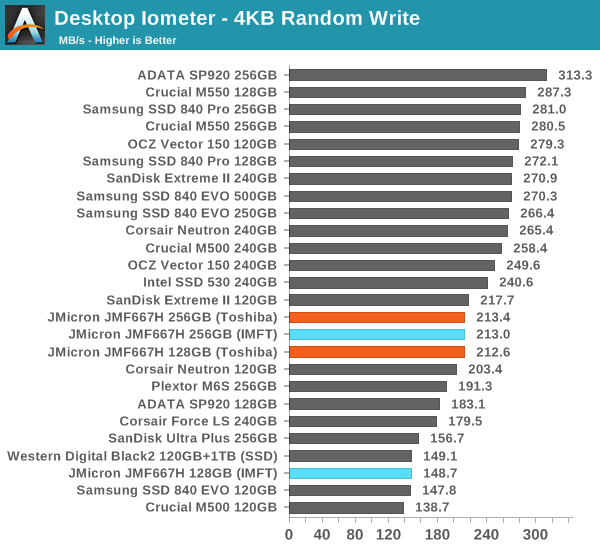
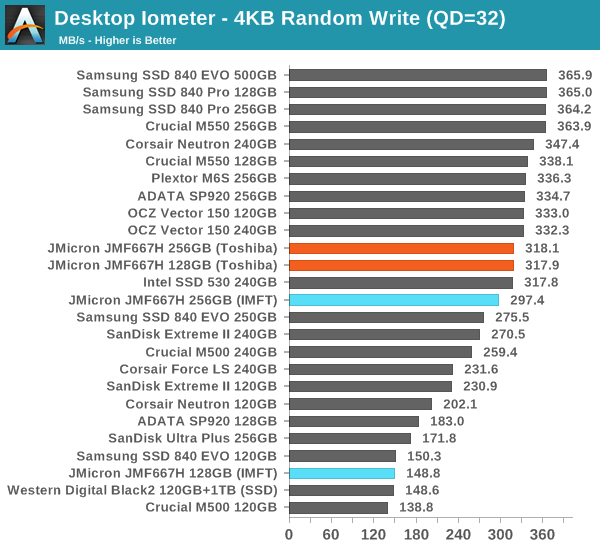
Random write performance is fairly average. I'm guessing the controller/firmware introduces some bottlenecks because the performance isn't really affected by the NAND other than in the 128GB configuration.
Sequential Read/Write Speed
To measure sequential performance we run a 1 minute long 128KB sequential test over the entire span of the drive at a queue depth of 1. The results reported are in average MB/s over the entire test length.
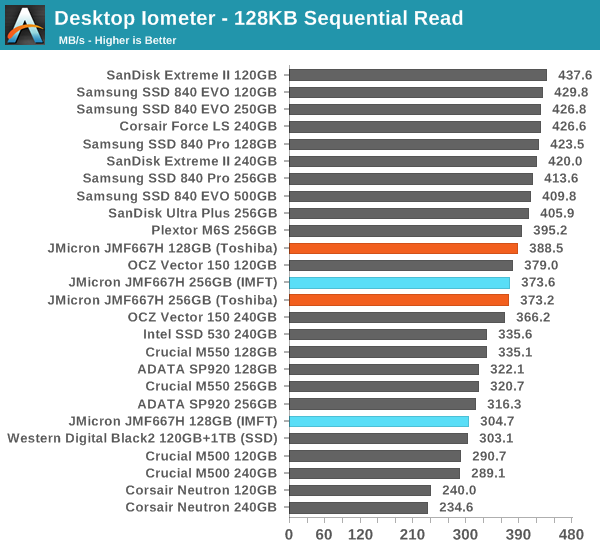
Sequential performance is also average. There is some variation especially in write performance depending on the NAND but even the IMFT version performs relatively well.
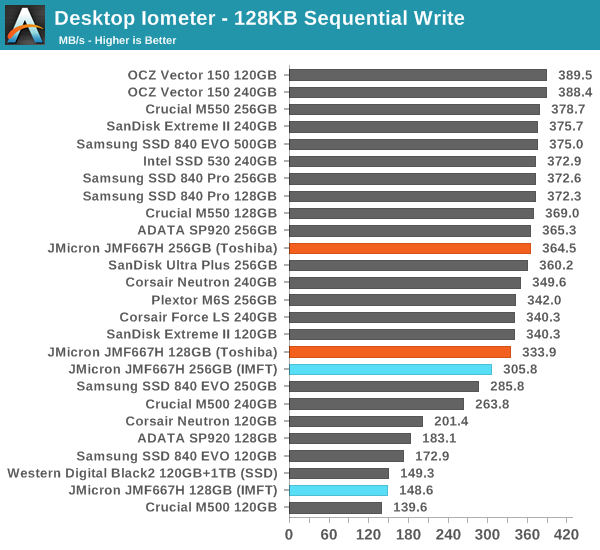
AS-SSD Incompressible Sequential Read/Write Performance
The AS-SSD sequential benchmark uses incompressible data for all of its transfers. The result is a pretty big reduction in sequential write speed on SandForce based controllers.
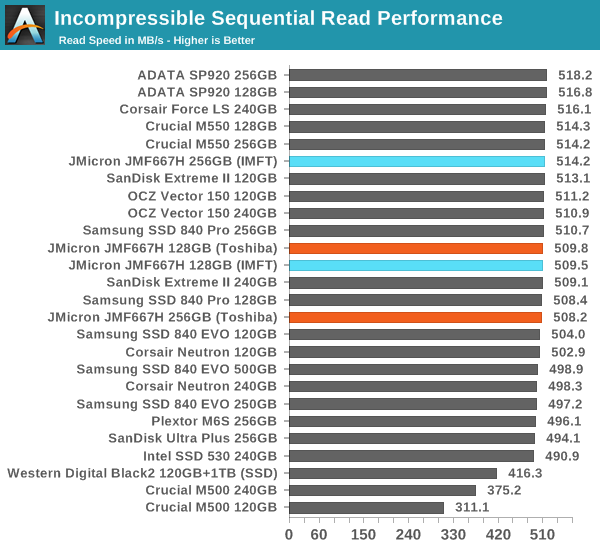
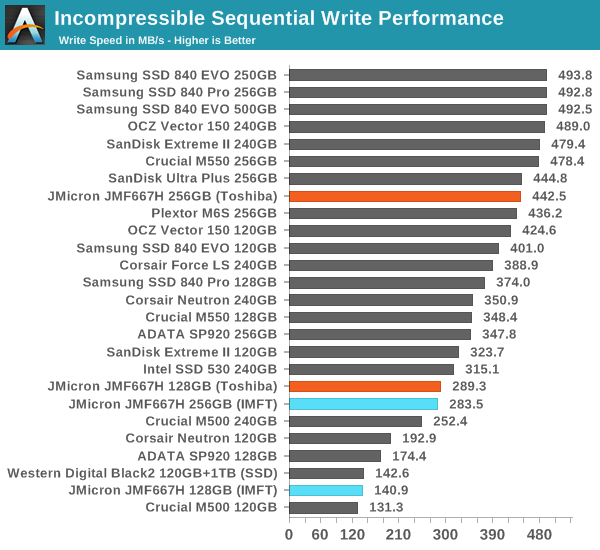










28 Comments
View All Comments
hojnikb - Thursday, May 29, 2014 - link
They should support TLC aswell.Couple TLC flash with a cheap and decent controller and you have a cheap and still reasonably performing drive.
I'm really surprised how far jmicron came over the last few years.
Death666Angel - Thursday, May 29, 2014 - link
Is anyone but Samsung getting SSD grade TLC at this time though?Laststop311 - Thursday, May 29, 2014 - link
Samsung has that unique position they can integrate the design of all the different parts of an ssd all under Samsung. The controller, dram, nand, firmware. This allowed samsung to quickly transition to TLC nand. This really makes the 1TB evo drive the best 2.5" drive for value/performance ratio. Samsung has the best performing m2 drive too the xp941.hojnikb - Thursday, May 29, 2014 - link
Also, is anantech gonan review the new SMI based drives ?hojnikb - Thursday, May 29, 2014 - link
*gonna* ... damn no edit optionrpg1966 - Thursday, May 29, 2014 - link
* "going to"Kristian Vättö - Thursday, May 29, 2014 - link
Yes. I have Corsair's Force LX and ADATA's SP620 but they'll have to until I come back from Computex.hojnikb - Thursday, May 29, 2014 - link
Great !Looking foward to your review.
romrunning - Thursday, May 29, 2014 - link
Can we also see a review for the Samsung XS1715 and the SMART Optimus Ultra SSDs?vonWolfhausen - Thursday, May 29, 2014 - link
Agreed. I have a PNY optima 240gb that I picked up for $90 (the discount actually came through). The SMI controller in it is legit. 500read/300write with low power consumption (micron 20nm sync MLC). Im curious about the performance consistancy, seems ok